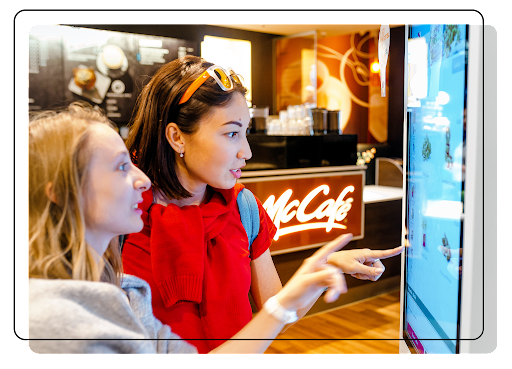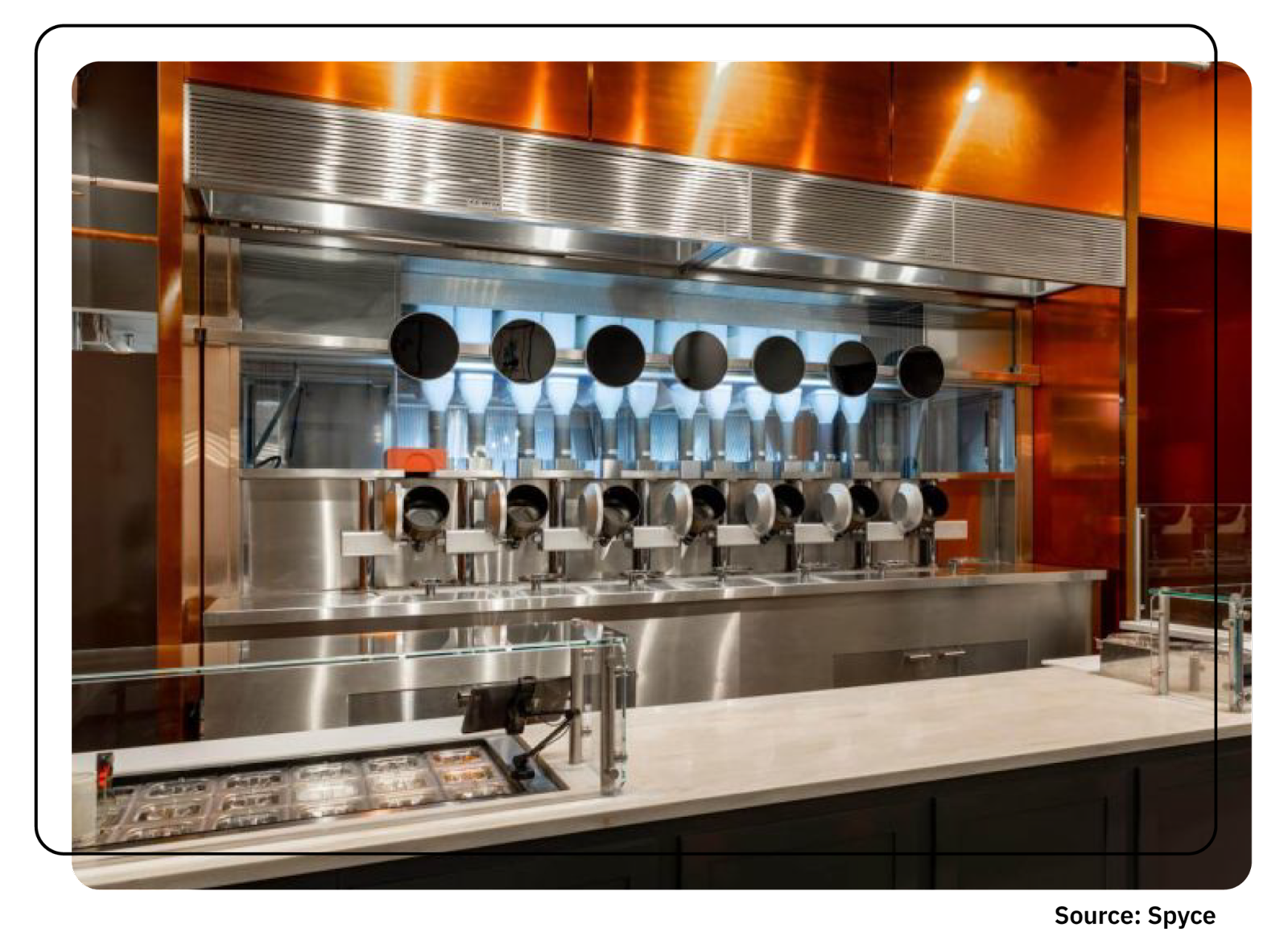When you hear the words, “automation in restaurants,” your mind may go to robots making pizzas or delivering food to customers. While those are exciting ideas, they don’t necessarily paint an accurate picture of how restaurant are using automation to improve the performance of their business.
Instead, restaurants are using virtual tools to help automate repetitive tasks that are important for the business. The ultimate goal is to use automation to improve customer service, drive more sales, and relieve restaurants of the pressures felt by rising labor costs.
Read on to learn about the state of automation in restaurants, as well as some easy ways for restaurants to start automating their own processes.
How automation in restaurants is impacting the industry
Automation is becoming increasingly popular because of it’s ability to reduce costs, drive sales, and provide a consistent service experience for guests. From automated marketing, to phone answering and content creation, the tools have proven to help restaurants get the most out of their staff without losing their ability to connect with their guests.
Will automation in restaurants ever replace human workers?
Don’t worry, automation tools are not going to replace human workers anytime soon. Instead, they are designed to work with a restaurant’s staff, ensuring they can focus on high-priority tasks.
In fact, automation tools are a great way to help staff further their professional development. For example, if you use artificial intelligence to write emails, the staff you previously dedicated to copy writing can instead focus on email strategy. Rather than being concerned with whether or not an email is getting out every week, they can pay attention to what subject lines drive open rates, what time of day yields the most online orders, and what offers prove to be popular with guests.
Automation can even help restaurant staff do more than they ever could. If implemented properly, should provide a more fulfilling work experience and reduce turnover.
Pros and cons of automation in restaurants
As with any new technology in your restaurant, it’s important to consider the perks and drawbacks of it’s use. A topic as wide and complex as restaurant automation is sure to have a few.
Pros of automation in restaurants
- Better customer experiences. Automation can make the entire guest experience faster and smoother. Automated systems can execute tasks faster and more accurately than people can. This translates to accurate orders, reduced wait times, and other positives for guests.
- High employee morale. Nobody likes performing labor-intensive, repetitive tasks—and these are the types of tasks automated systems excel at. By removing boring, repetitive work from staff’s plates, restaurants can free up more time for employees to do the work they love: focusing on guests.
- Better accuracy and compliance. Automated systems can link together your POS, inventory management, accounting, and video footage. This can cut down on mistakes, theft, and other problems affecting your restaurant’s reporting accuracy.
- Higher profits. As automation makes your restaurant more efficient and improves your guests’ experiences, you can expect higher check sizes, better table turn, and a boost to your bottom line.
Cons of automation in restaurants
- High costs. Since automation technology is still pretty new, much of it is expensive—the main barrier to entry to most restaurants. While the idea is that automation will help cut costs and increase profits, paying for itself over time, restaurants interested in using it have to consider it an investment that will pay for itself over an extended period of time.
- Technological advancement. Automation technology is becoming smarter and more advanced all the time. But as of now, robots can’t make the same kinds of complex judgment calls that humans can. For the most part, they’re only capable of performing simple, rote tasks.
- Lack of human connection. Everyone in the restaurant industry knows that dining out is an experience—and one that’s better shared with others. From being greeted by a host to asking for recommendations from a server, human connections are central to the experience of eating in a restaurant. It’s important to consider where human touch makes the biggest impact on your restaurant, and avoid implementing automation so as not to ostracize your guests.
8 ways automation in restaurants can boost efficiency and profitability
A common misconception about automation in restaurants is that it requires an entire robotic kitchen. That’s just not the case. There are plenty of ways even small restaurants can automate individual tasks or processes.
Looking for ways to start implementing automation in your restaurant? These starting points are simple and have low barriers to entry, meaning they’re affordable and can drive results quickly.
Automated content creation
One of the most important way to see success from your restaurant marketing is through consistent efforts, but even the most creative restaurant marketer can struggle to craft the perfect caption from time-to-time. That’s why many restaurants are turning to artificial intelligence (AI) to help with their content creation.
From simple tools that help with copywriting, like ChatGPT, to more complex tools that build entire content calendars using information from your restaurant’s website, automated content creation has proven to be a massive time saver for restaurants. In some cases, it’s even helped drive more online sales.
House of Pizza is one restaurant that uses AI Marketing to automate email and social post creation. In their first month with the tool, it more than tripled their marketing impressions—and in just 2 months, it increased their online orders by 32%. They’re a great example of how automation can pay for itself!

Automated email delivery
Research shows that consumers prefer personalized messages that are based on their behavior and preferences—a great idea in theory, but difficult for a restaurant’s limited staff to execute. That’s where automated email delivery comes in.
This technology pays attention to details and behavior for each customer—such as when they last placed an online order, when their birthday is, or whether or not they left a review of a dish after they ordered. It then sends perfectly timed, personalized emails based on that information, resulting in an excellent service experience for guests without any extra work from your restaurant.
Automated emails has even turned some restaurant owners into one man marketing machines. Just check out Ocean State Sandwich Company, whose owner single-handedly drove over $42,000 in online sales with the help of automated email delivery. Not bad for a sandwich shop in Rhode Island!
Automated phone answering
A phone call to a restaurant provides a difficult decision for staff; do they ignore the guest standing right in front of them to pick it up, or do they send the customer to voicemail and potentially lose their business? Fortunately, automated phone answering removes that decision entirely.
Powered by AI, these tools identify keywords from guests’ questions and provide answers based on information from a restaurant’s website. They can even text diners a link to place an online order or make a reservation, leading to faster service and increased order accuracy.
In some cases, automated phone answering has saved restaurant staff hundreds of hours from speaking on the phone, freeing them up to focus on more pressing tasks. For example, Burrito Gallery managed to save their staff over 260 hours by implementing AI Answering.
Self-service ordering
Self-serve ordering kiosks are becoming more and more common, especially in the quick service industry (McDonald’s locations all over the world now allow guests to place their own orders on kiosks).

But this type of automation is also showing up in simpler ways that are more accessible for restaurants through first-party online ordering. While it works similarly to other online ordering systems, first-party online ordering lives directly on your website and makes it easy for guests to place their own orders. Some restaurants will even create QR codes that direct on-premise guests to their online menus to place their order.
In addition to improving efficiency, first-party online ordering can also help restaurants improve their margins as it doesn’t require any commissions or fees.
Self checkout
In addition to self-service ordering, self-checkout is becoming more common in restaurants. New technology allows guests to make contactless payments right from the table. They’re also able to see itemized receipts, split the bill, and leave a tip, all without any input from your staff. This makes the checkout process faster and less complicated.
Capacity management
Managing capacity is an important part of keeping your guests happy and your operations running smoothly. Overbook the restaurant, and wait times will increase, staff will become stressed, and guests will likely be less happy. Underbook the restaurant, and you miss out on potential revenue.
Automated software can now help restaurants manage their capacity in real-time, which creates a more seamless guest experience. Knowing your restaurant’s exact capacity for each service can also help with staffing, keeping labor costs down.
Prep and cooking

There are a handful of restaurants where automation now handles all the cooking. Take Boston’s Spyce, for example. Co-founded by four graduates from MIT, Spyce uses robotic woks that tumble food with perfect temperature control for an even sear.
For the average restaurant, though, a fully robotic kitchen is out of reach—and impractical. Instead, some restaurants are turning to automation to help with simple prep work, like chopping vegetables before a dinner service. Automation can also be great to handle more dangerous kitchen tasks, like those involving extreme heat. Automatic pizza ovens, for example, can use conveyor belts to cook pizzas, keeping cooks separated from anything that could burn them. Automation can take over some of the more repetitive work in the back of the house, but also some tasks that can be dangerous for humans.
Inventory management
Food waste is one of the costliest pain points in the restaurant industry—it’s estimated that restaurants lose around $25 billion per year because of industry waste.
But new technology aims to help restaurants better manage their inventories, including using automation that can predict future orders based on historic data. This helps restaurants cut down on waste and boost their bottom line.
Automated delivery
And finally, automation is making its way into food delivery services. More and more restaurants are turning to mobile apps and online ordering platforms to sync guests’ online orders with their POS systems—no more manually taking and managing online orders. Some restaurants are even experimenting with robots and drones that can make deliveries—but that’s a long way away from being standard in the industry.
Technology with automation built in
Popmenu is the restaurant technology with automation built in. From first-party online ordering and automated emails, to AI-powered content creation and phone answering, we have every tool a restaurant needs to improve efficiency and drive sales.
Interested in how we can help bring automation to your restaurant? Schedule your free demo today.





.jpg)
.jpg)
.png)






